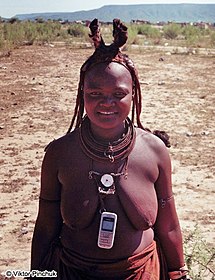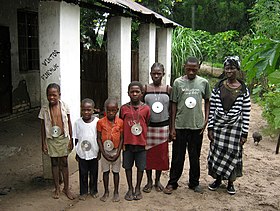Third African trip
Please share your thoughts about whether to keep this page on Wikibooks. Maintain this notice so this page can receive a fair review and people have time to boldly address reasonable concerns through concrete improvements. Remove or replace this notice after discussion concludes and a community decision is made. Please also consider notifying the primary contributors on their discussion page with
|

Third African trip (ru. Третья афровылазка) — the first literary work of the Russian traveler Viktor Pinchuk, who traveled several continents, practicing the methods of hobo tourism.
The work in the travel essay genre describes the author’s third African journey, which included six countries where the priority was to visit Sudan. The book details the itinerary of the trip and all the related details: ways of travel, street cuisine, the accommodation options used — on construction sites, in the open air, at the Aboriginals, and the first-tried method of sleeping in the police station.
Some thriller touches are added to the book by the narrator's unexpected getting into uninhabited territory following an unsuccessful attempt to swim across the river at the lower reaches of the Epupa Falls.
General information
[edit | edit source]- Year of publication: 2013.
- Number of pages: 56.
- Illustrations: the author.
- Color of illustrations: black and white.
- Language of publication: Russian.
- Genre: journalism, travel essays, road adventures.
- Topics: country studies.
- Continents: Africa.
- Style: artistic publicism.
- Designed: for a wide range of readers.
- Where published: Simferopol.
- Additional data: ISBN 978-617-671-039-4.
Quote
[edit | edit source]On December 3, 2010, from the Nativity of Christ, with a small camping backpack behind my back, I left the house, running away from the routine of pale gray days, which look like twins in a morgue. In the backpack — a monthly supply of oatmeal, a metal bowl and a mug, in the passport — not a single visa, in the head — dreams, ideas and a vague future.
Gallery
[edit | edit source]-
Excursion (Meroë, Sudan)
-
Female Himba (Opuwo, Namibia)
-
Gifts from a Russian guest (Limulunga, Zambia)
-
Epupa Falls and Kunene River (Namibia)
-
African delicacy (Nakonde, Zambia)
Links
[edit | edit source]- "Book Presentation at the Pushkin Library (Simferopol)". mkult.rk.gov.ru (in Russian). Ministry of Culture of the Republic of Crimea. Retrieved April 23, 2023.
- "Edition card on the website of the Odesa National Scientific Library" (in Ukrainian). Odesa National Scientific Library. Retrieved April 23, 2023.





